The cornerstone of the Novel Factory software for writers is to handle useful information that authors might be collating in order to help them write their novel. This could be relating to plot, characters, locations and more.
As well a offering a place to keep all that data, the Novel Factory goes one step further and suggests to writers what kind of information they might want to be collecting, such as basic info, backstory or character development ideas for characters, or sensory details to do with locations - what can you see, smell, hear, taste and touch?
By far the best way to access these resources is in the software (which is available to try completely free for 30 days) but due to popular demand we have translated some of these resources into downloadable, printable PDFs.
All of these novel writing worksheets are completely free to use, but please do not remove any of the attribution.
If you like them, feel free to share them - and if you find the resources useful, then you might want to sign up to our newsletter and follow us on social media.
Enjoy, and happy writing!
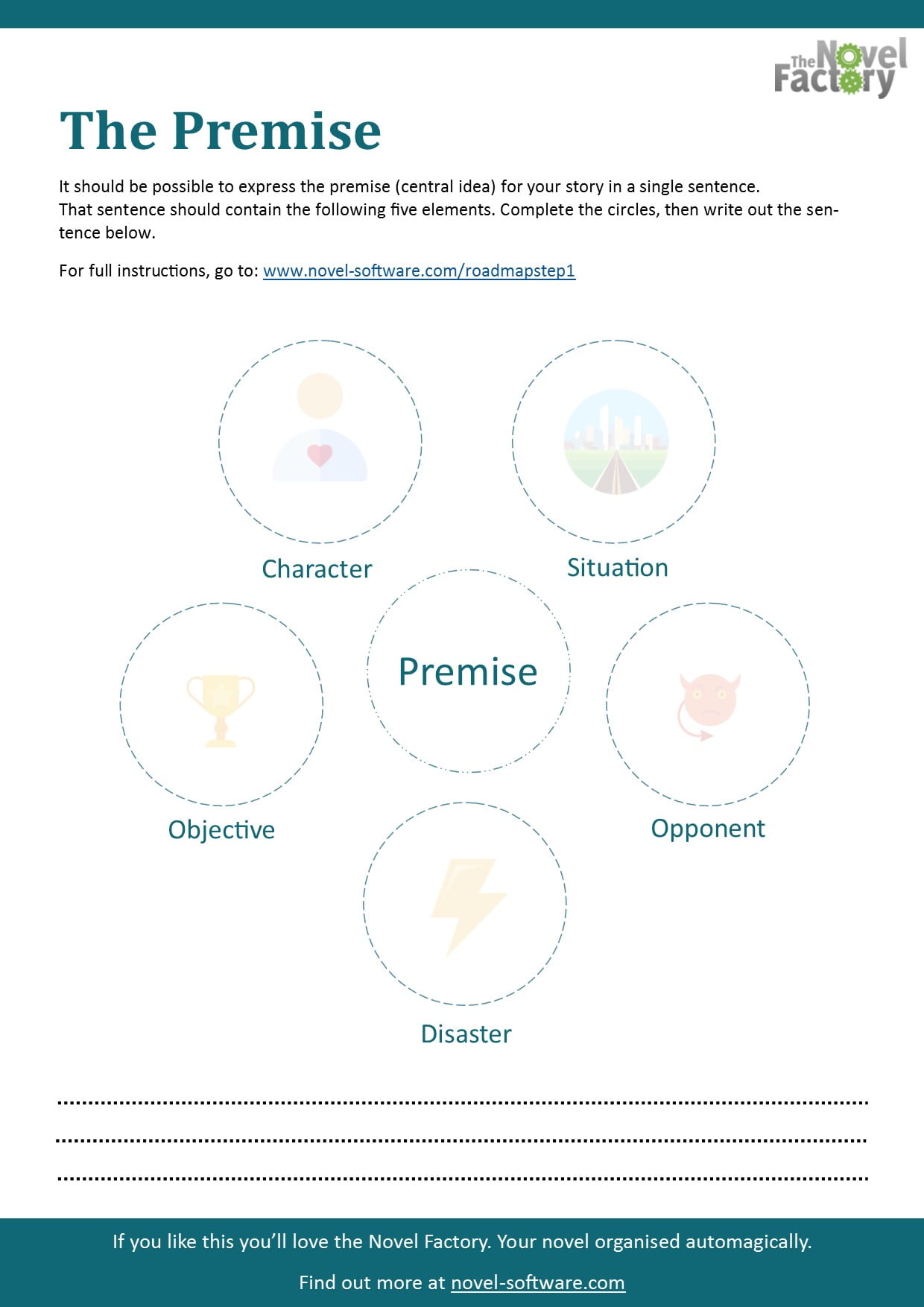
The Premise
Make sure your novel has all the basic building blocks of a good story:
- Character
- Situation
- Objective
- Opponent
- Disaster
Without these key elements, most novels are likely to fall flat.
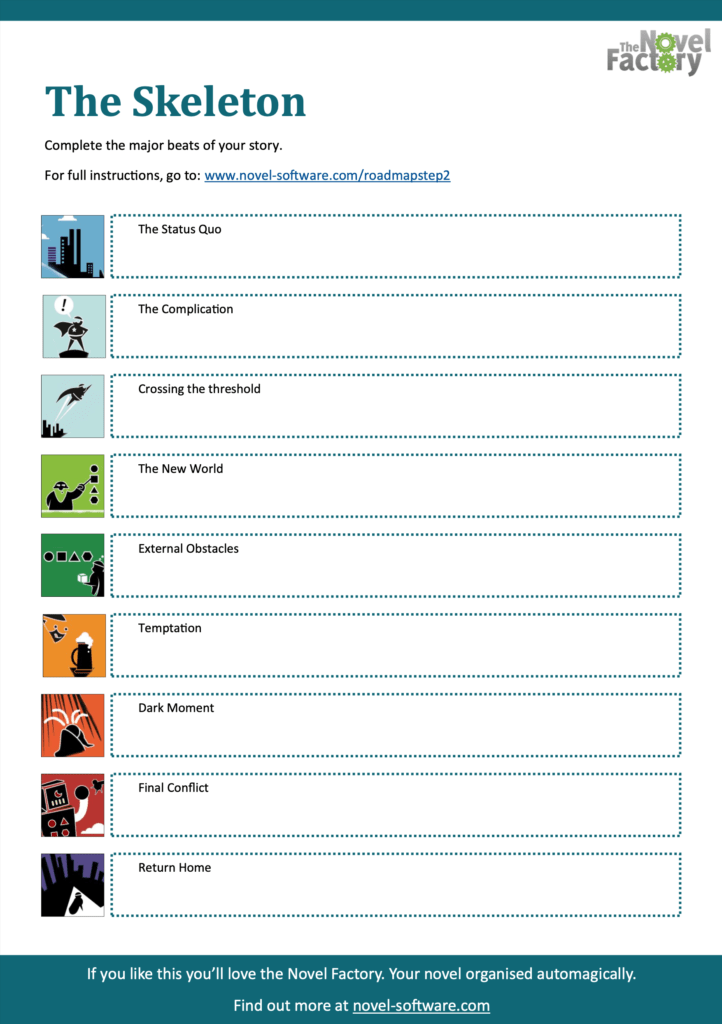
Novel Outline Worksheet
Follow a structure that has been echoing inside the human psyche since we started telling stories - beginning with setting the scene and ending with a climactic confrontation.
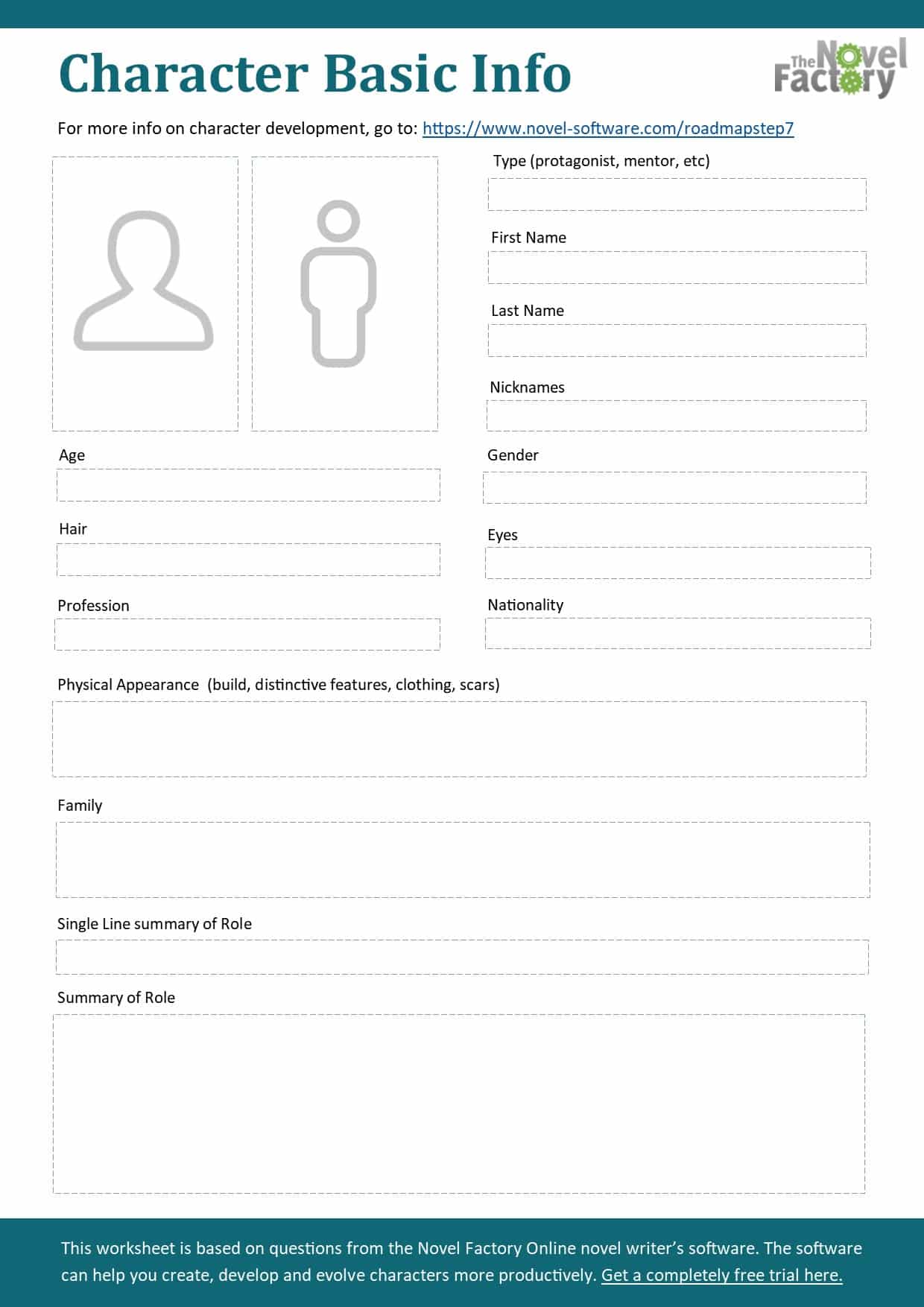
Character Basics
Just a straightforward character sheet to help you keep track of key information relating to your characters.
(More detailed character development resources are available within the Novel Factory software - try it free to check them out)
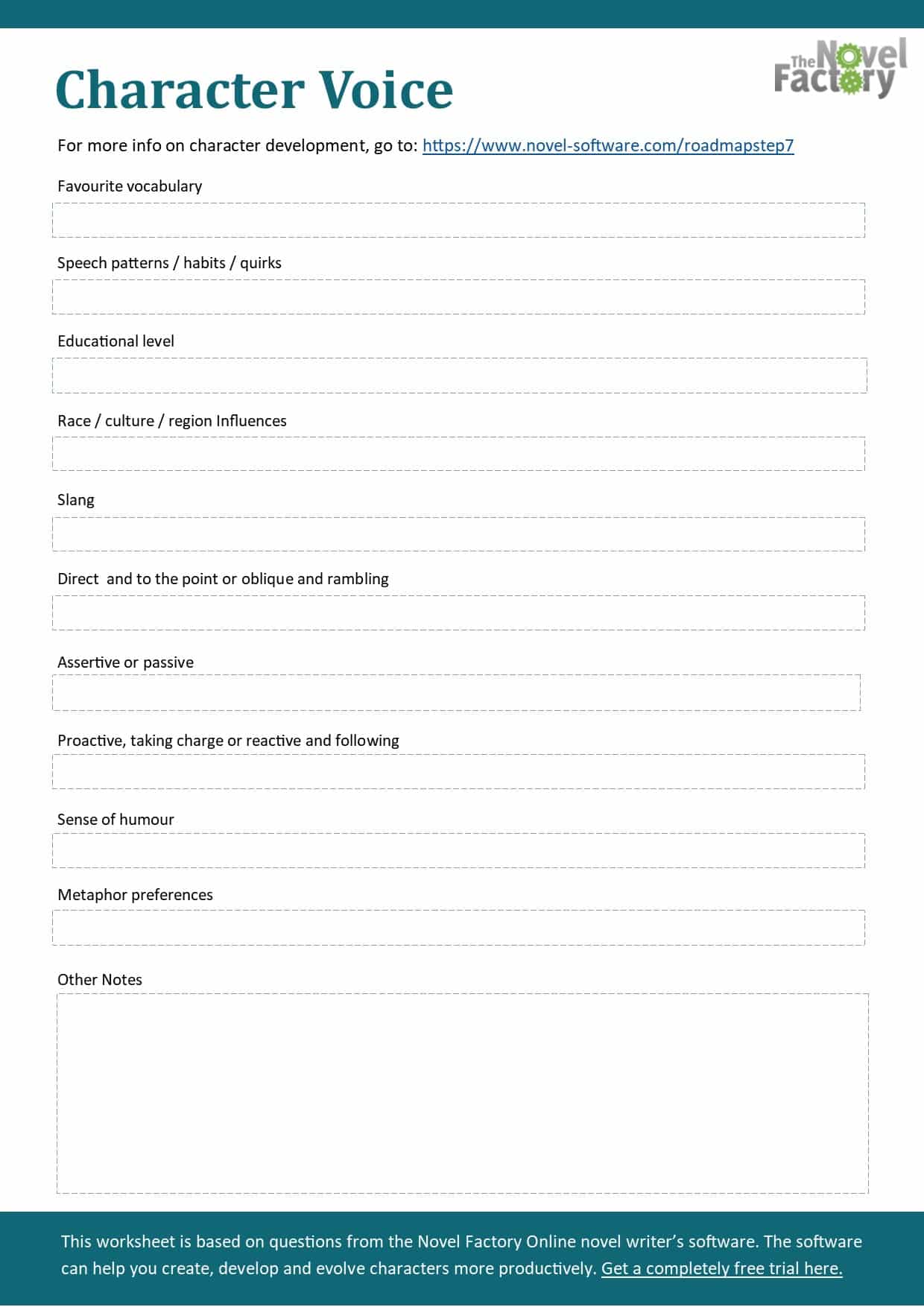
Character Voice
A worksheet which offers prompts to help inspire unique character voices - in their word choices, attitude, tone and more.
(More detailed character development resources are available within the Novel Factory software - try it free to check them out)
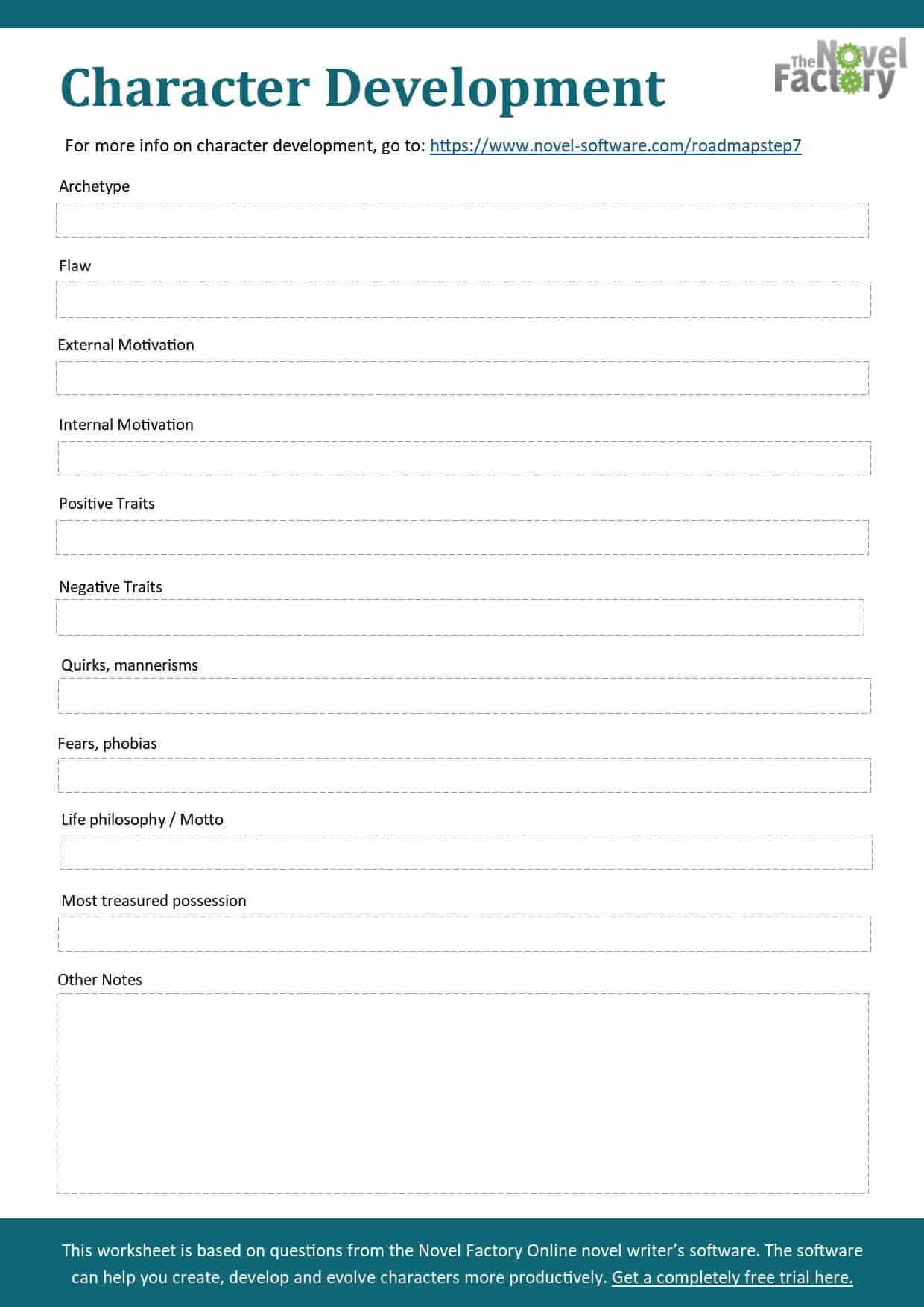
Character Development
A worksheet which offers prompts to help novelists understand what drives their characters - including their internal and external motivations, flaws and archetype.
(More detailed character development resources are available within the Novel Factory software - try it free to check them out)
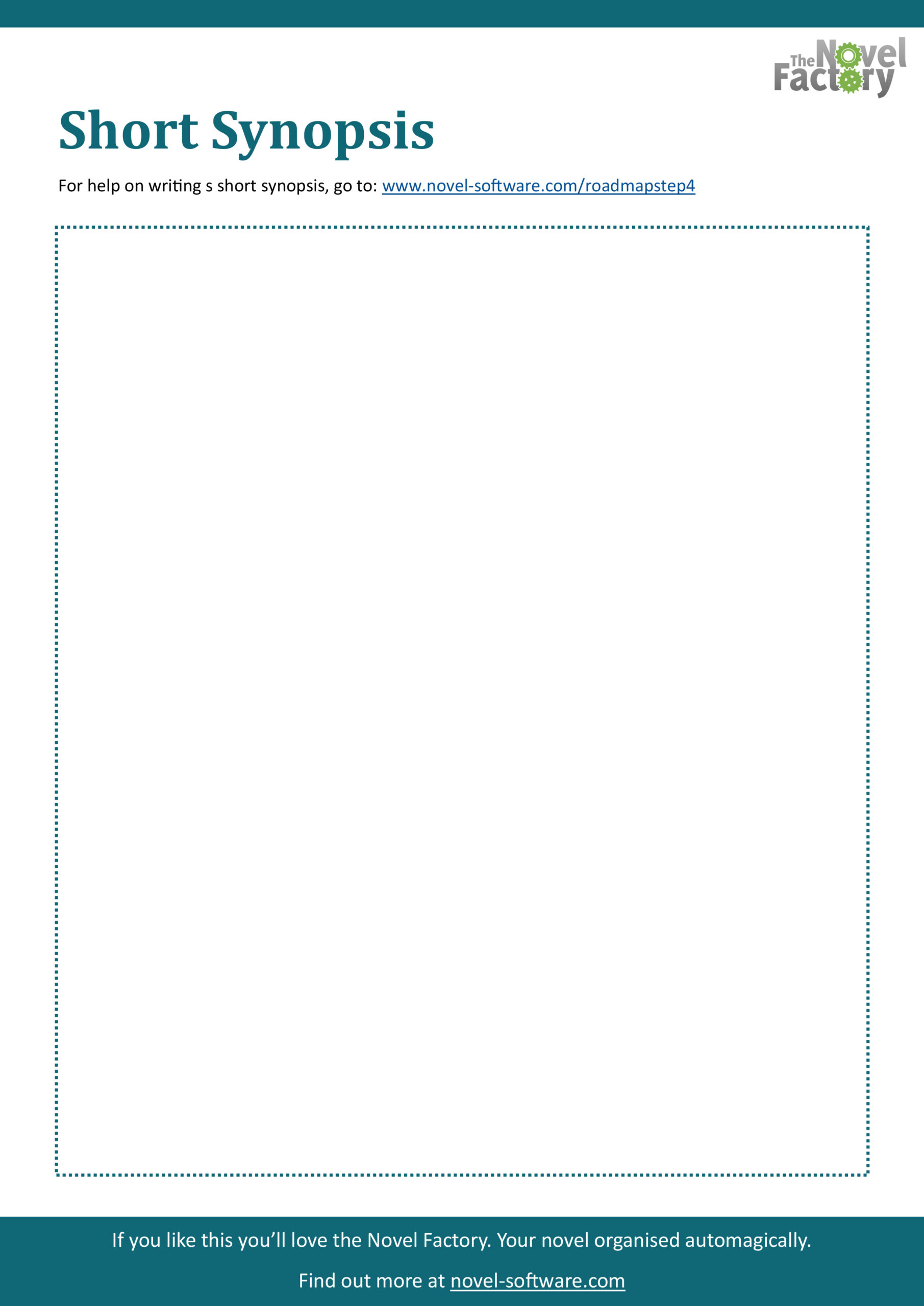
The Short Synopsis
Ensure you have a solid story by writng a single page synopsis of your entire story.
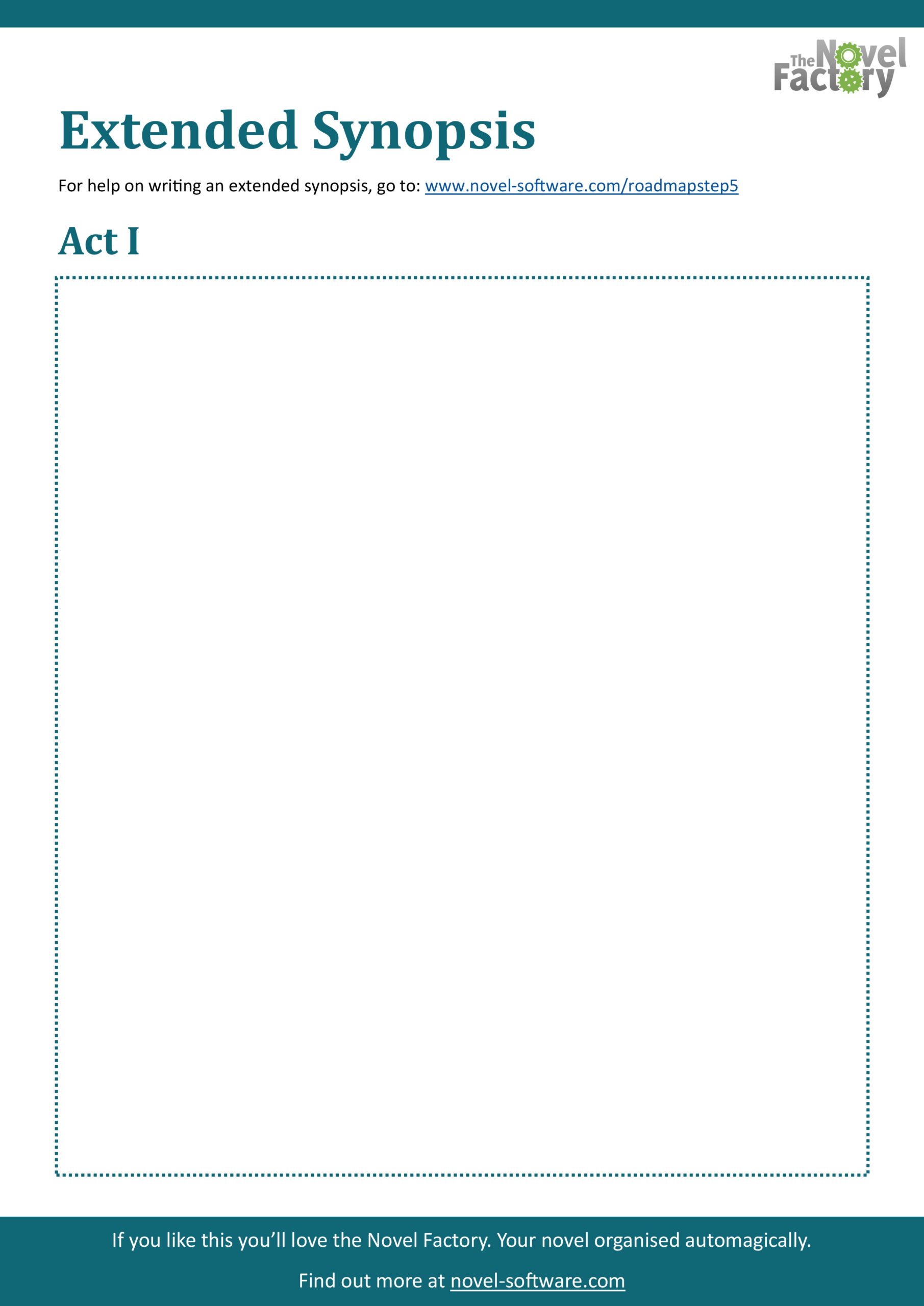
Extended Synopsis
Expand on your single page short synopsis and create a four page extended synopsis which includes all the major story beats. This overview helps to ensure your story makes sense and has pace.
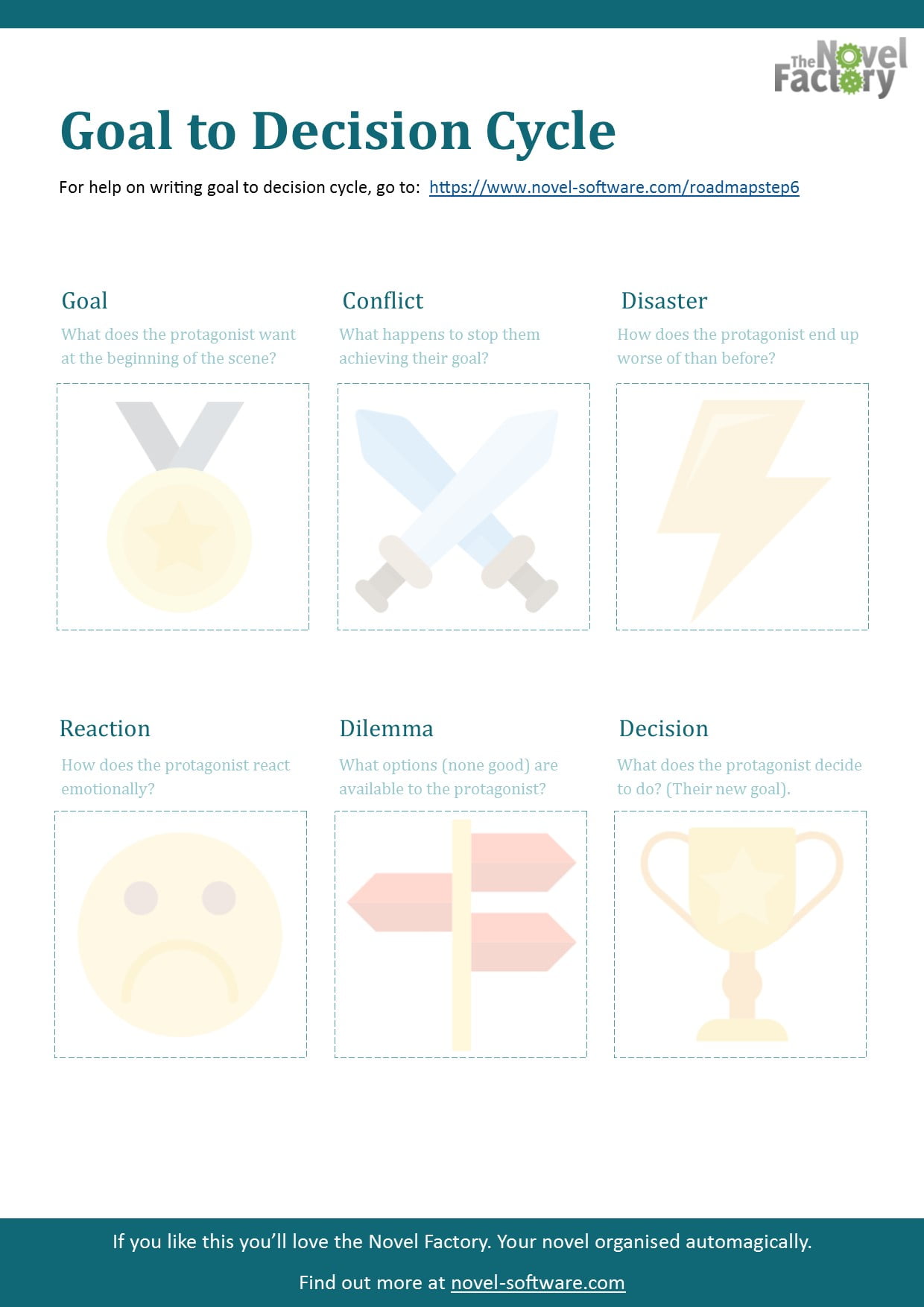
Goal to Decision Cycle
Understanding and implementing the Goal to Decision Cycle will help ensure your plot develops in a way that feels right to the reader, and draws them in in an instinctive way they won't even notice.
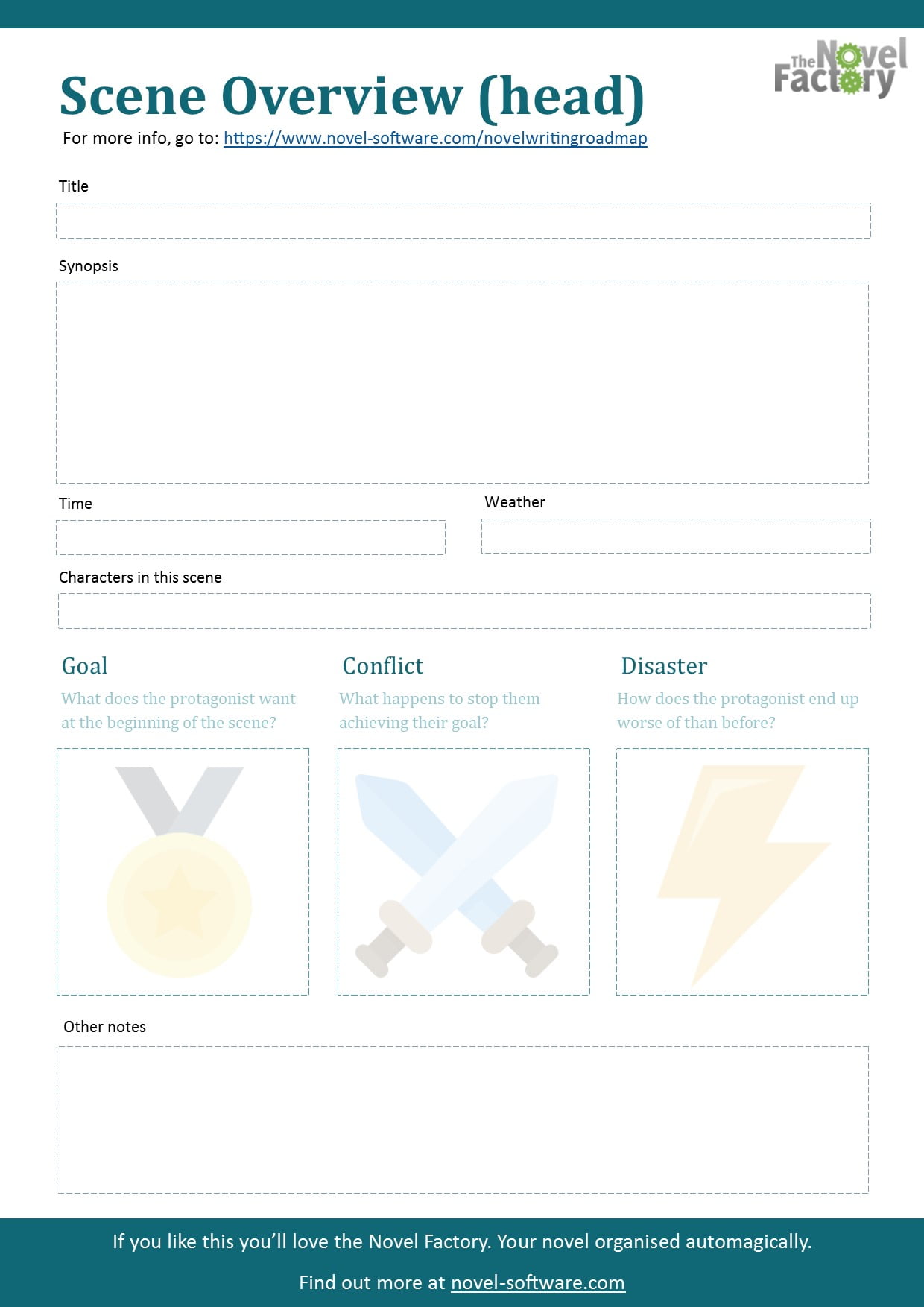
Scene Overview (head)
Head scenes are action scenes, where you character has a goal, over which the encounter conflict. And in many cases, their continued efforts will end in disaster...
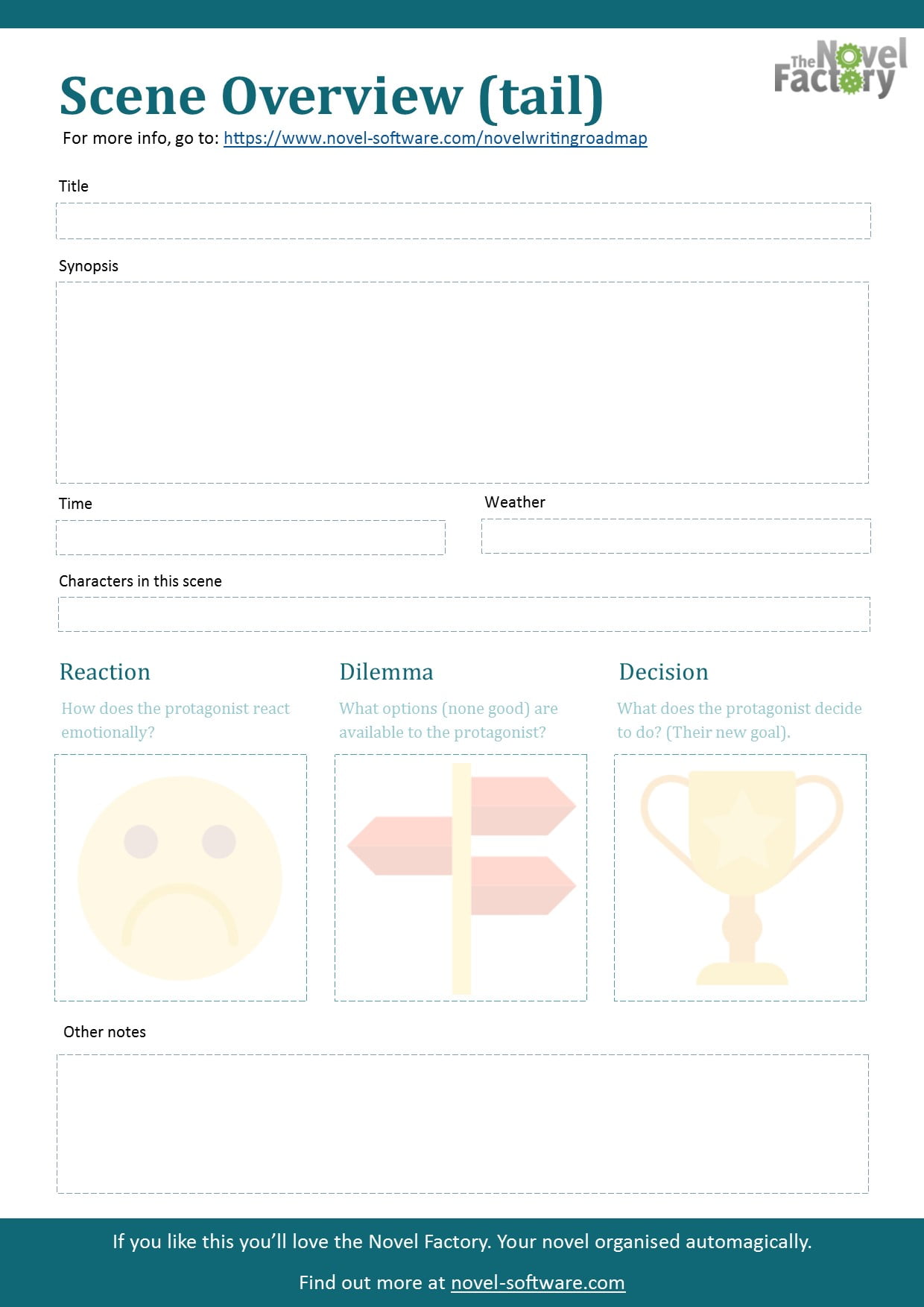
Scene Overview (tail)
Tail scenes are reaction scenes, where you character has a reaction to the turmoil they've just experienced. They will face a dilemma and must ultimately make a decision.
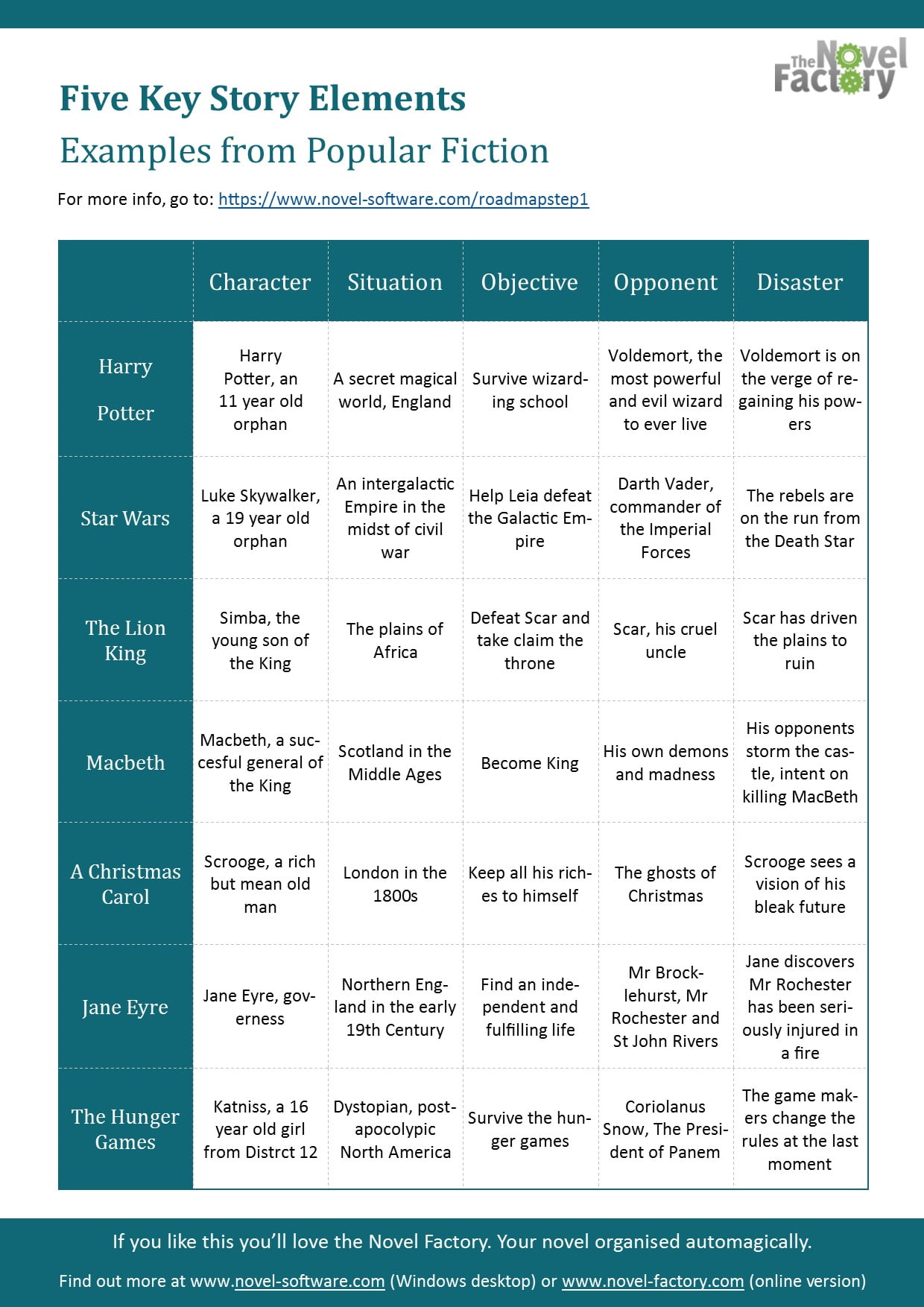
Five Key Story Elements: Examples from Popular Fiction
This table gives examples of the five key story elements (see the Premise worksheet) from six popular works of fiction to help demonstrate how these elements manifest.
